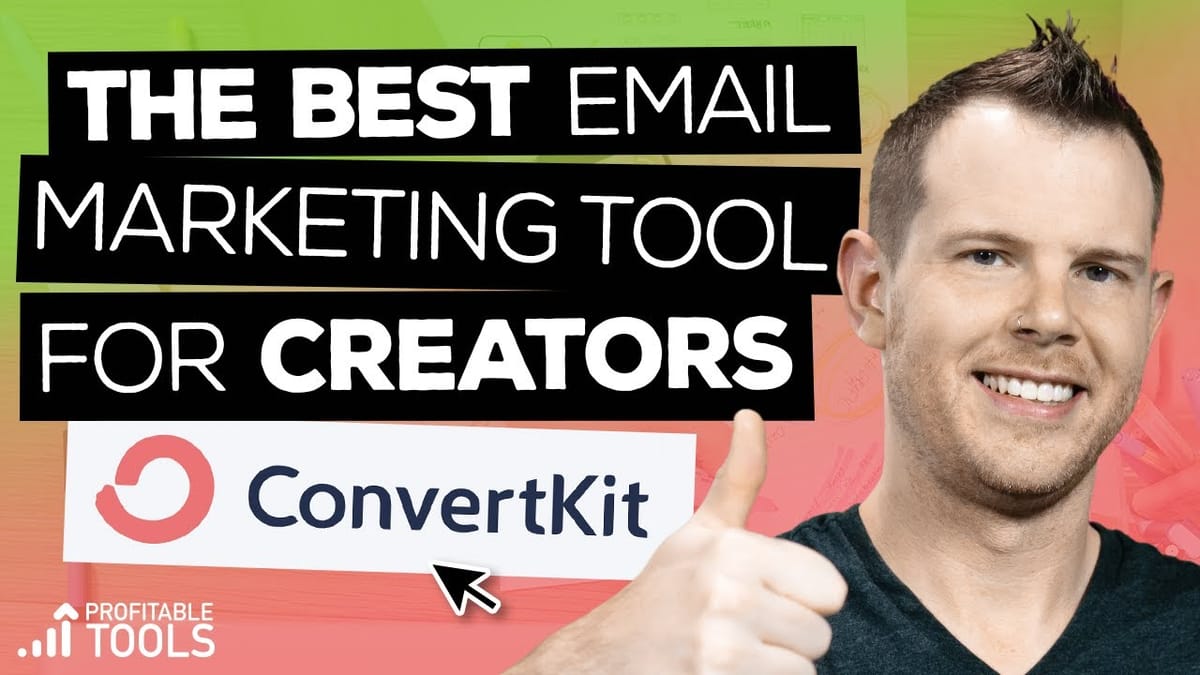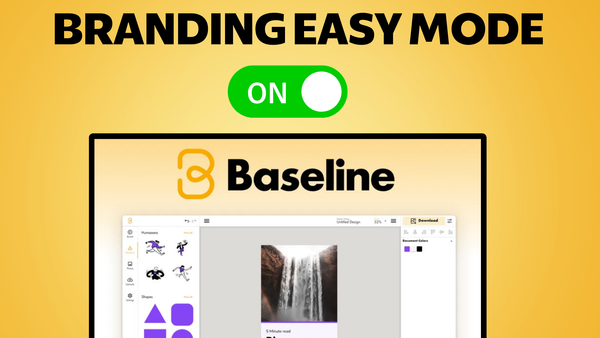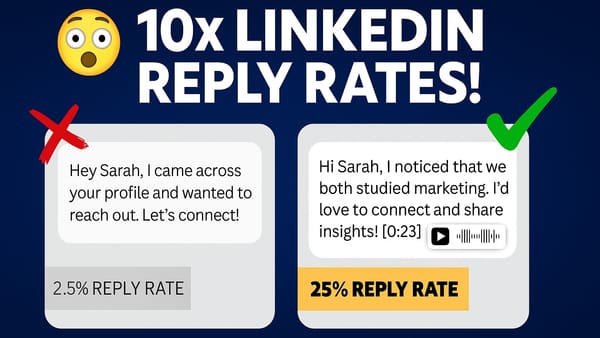The Best Email Marketing Software For Creators - ConvertKit Review
Discover why ConvertKit is the top email marketing choice for creators. Explore features, pricing, and tools designed for content success.

Introduction
In today’s digital landscape, email marketing remains a powerful tool for creators to connect with their audience and grow their businesses. Among the various email marketing platforms available, ConvertKit has emerged as a top choice for creators, including podcasters, bloggers, authors, and online course creators. This comprehensive review will explore the features, benefits, and potential drawbacks of ConvertKit, providing valuable insights for creators looking to optimize their email marketing efforts.
ConvertKit offers a user-friendly interface, powerful automation tools, and a range of features specifically designed to meet the needs of content creators. From its intuitive landing page builder to its robust tagging and segmentation capabilities, ConvertKit aims to simplify the process of building and nurturing an email list. This review will delve into the platform’s key features, pricing structure, and overall effectiveness in helping creators achieve their marketing goals.
Whether you’re a seasoned email marketer or just starting out, this in-depth analysis of ConvertKit will help you determine if it’s the right choice for your creative endeavors. We’ll explore how ConvertKit compares to other popular email marketing tools and discuss its potential impact on your audience engagement and business growth. So, let’s dive in and discover why ConvertKit has become the go-to email marketing software for many successful creators.
Get Convert KitConvertKit Overview
ConvertKit has established itself as a leading email marketing platform specifically tailored for creators. In this section, we’ll explore the key features and benefits that make ConvertKit stand out in the crowded email marketing landscape.
Target Audience
ConvertKit is designed with creators in mind, catering to:
- Podcasters
- Bloggers
- Authors
- Online course creators
- Musicians
- Content creators across various niches
Key Features
ConvertKit offers a range of features that make it an attractive option for creators:
- User-friendly interface
- Powerful automation tools
- Landing page builder
- Customizable forms
- Tagging and segmentation capabilities
- Email sequence creation
- A/B testing functionality
- Integration with popular platforms and tools
Pricing Structure
ConvertKit’s pricing model has evolved to accommodate creators at different stages of their journey:
- Free plan: Now available for creators just starting out
- Paid plans: Start at $29 per month for up to 1,000 subscribers
- Scalable pricing: Increases as your subscriber list grows
ConvertKit vs. Competitors
Comparing ConvertKit to other email marketing platforms:
- More creator-focused than general-purpose tools like MailChimp
- Simpler interface compared to complex platforms like ActiveCampaign
- Better automation capabilities than basic email tools
- Seamless integration with popular creator tools and platforms
Free Plan Features
ConvertKit’s introduction of a free plan has made it more accessible to creators who are just starting out. Let’s explore the features and limitations of the free plan in detail.
Subscriber Limit
- Free plan allows up to 1,000 subscribers
- Ideal for creators building their initial audience
- Scalable to paid plans as your list grows
Landing Pages and Forms
- Create unlimited landing pages
- Design customizable opt-in forms
- Choose from a variety of templates
- Embed forms on existing websites
Broadcast Emails
- Send one-time emails to your list
- Limited to 100 contacts initially
- Can increase to 1,000 contacts through referrals
Limitations
- No access to automations and sequences
- Limited email design options
- ConvertKit branding on forms and landing pages
Upgrading to Paid Plans
- Unlock automations and sequences
- Access to more advanced features
- Remove ConvertKit branding
- Increase subscriber limit beyond 1,000
Landing Page Builder
ConvertKit’s landing page builder is a powerful tool for creators to quickly create and publish opt-in pages. Let’s dive into its features and functionality.
Template Selection
- Variety of modern, pre-designed templates
- Categorized by niche (e.g., podcasts, ebooks)
- Customizable to match your brand
Customization Options
- Point-and-click interface for easy editing
- Add or remove elements (text, images, buttons)
- Customize colors, fonts, and layouts
- Integration with Unsplash for free stock images
Mobile Responsiveness
- All templates are mobile-responsive
- Preview function to check desktop and mobile views
- Ensures optimal viewing experience across devices
Publishing Options
- Publish to ConvertKit subdomain
- Connect custom domain for a professional look
- Easy integration with existing websites
A/B Testing
- Test different layouts, copy, or images
- Optimize conversion rates based on data
- Improve overall landing page performance
Form Builder
ConvertKit’s form builder allows creators to design and implement opt-in forms across their digital properties. Here’s a detailed look at its capabilities:
Form Types
- Inline forms: Embed within content
- Modal pop-ups: Appear over the page content
- Slide-in forms: Appear from the side or bottom
- Sticky bars: Fixed to the top or bottom of the page
Design Options
- Customizable templates for each form type
- Ability to add custom fields
- Flexibility in layout and styling
- Option to add images or branding elements
Integration
- Easy embedding on websites and blogs
- WordPress plugin for seamless integration
- Compatible with popular page builders like Elementor
Performance Tracking
- Built-in analytics to measure form performance
- A/B testing capabilities for optimization
- Insights on conversion rates and subscriber growth
Advanced Features
- Double opt-in functionality
- GDPR compliance options
- Ability to deliver lead magnets automatically
Subscriber Management
Effective subscriber management is crucial for email marketing success. ConvertKit offers robust tools to organize and segment your audience.
Tagging System
- Create custom tags to categorize subscribers
- Automatically apply tags based on actions or form submissions
- Use tags for targeted email campaigns
Segments
- Create dynamic segments based on multiple criteria
- Combine tags, custom fields, and subscriber actions
- Easily target specific groups within your audience
Custom Fields
- Add custom data points to subscriber profiles
- Collect relevant information for personalization
- Use custom fields in email content for tailored messaging
Subscriber Import/Export
- Easy import from other email platforms
- CSV import functionality
- Export options for backup or analysis purposes
List Cleaning
- Automatic handling of bounces and unsubscribes
- Option to remove inactive subscribers
- Maintain a healthy and engaged email list
Email Broadcasts
ConvertKit’s broadcast feature allows creators to send one-time emails to their subscribers. Let’s explore the functionality and best practices for using broadcasts effectively.
Composing Broadcasts
- User-friendly email editor
- Rich text formatting options
- Ability to add images and media
- Personalization using subscriber data
Targeting Options
- Send to entire list or specific segments
- Use tags and custom fields for precise targeting
- Exclude certain subscribers or segments
Scheduling
- Choose immediate or scheduled sending
- Set optimal send times based on subscriber data
- Timezone considerations for global audiences
A/B Testing
- Test subject lines for improved open rates
- Evaluate different content versions
- Automatically send winning version to remaining subscribers
Performance Analytics
- Track open rates, click-through rates, and conversions
- Identify top-performing content and subject lines
- Use insights to improve future broadcasts
Email Sequences
Email sequences are a powerful tool for nurturing subscribers and driving conversions. ConvertKit’s sequence builder offers flexibility and automation for creators.
Creating Sequences
- Intuitive interface for building multi-email sequences
- Set intervals between emails (days, hours)
- Customize sending schedule (e.g., exclude weekends)
Content Creation
- Write and format emails within the sequence builder
- Add personalization elements
- Include links and calls-to-action
Triggering Sequences
- Start sequences based on form submissions
- Trigger from specific tags or actions
- Integrate with automations for complex workflows
Performance Tracking
- Monitor open rates and click-through rates for each email
- Identify drop-off points in the sequence
- Optimize based on subscriber engagement
Use Cases
- Welcome series for new subscribers
- Product launch sequences
- Educational course delivery
- Sales funnels and lead nurturing
Automations
ConvertKit’s automation features allow creators to create sophisticated marketing workflows. Let’s dive into the capabilities and potential applications of these powerful tools.
Visual Automation Builder
- Drag-and-drop interface for creating workflows
- Connect multiple actions and conditions
- Visualize the subscriber journey
Trigger Events
- Form submissions
- Tag additions or removals
- Purchase events
- Custom API triggers
Actions
- Add or remove tags
- Move subscribers between sequences
- Send one-off emails
- Trigger integrations with other tools
Conditional Logic
- Create branches based on subscriber actions
- Personalize journeys based on preferences or behavior
- Implement if/then scenarios for targeted messaging
Templates and Use Cases
- Pre-built templates for common scenarios (e.g., product launches, webinars)
- Customize templates to fit specific needs
- Examples: Abandoned cart recovery, course delivery, lead scoring
Reporting and Optimization
- Track performance of individual automation steps
- Identify bottlenecks or drop-off points
- Continuously refine and improve workflows
Integrations
ConvertKit’s ability to integrate with other tools and platforms is crucial for creators looking to streamline their workflows. Here’s an overview of the integration capabilities:
Native Integrations
- E-commerce platforms (Shopify, WooCommerce)
- Membership sites (Wishlist Member)
- Course platforms (Teachable, Thinkific)
- Payment processors (Stripe, PayPal)
WordPress Integration
- Official WordPress plugin
- Compatible with popular form builders (Gravity Forms, Elementor)
- WP Fusion for advanced WordPress integration
Third-Party Connections
- Zapier integration for connecting with thousands of apps
- Direct API access for custom integrations
- Webhooks for triggering actions in external systems
Use Cases
- Automatically add customers to email lists after purchase
- Trigger course access based on tag changes
- Sync subscriber data across multiple platforms
- Create complex marketing funnels using multiple tools
Best Practices
- Regularly audit integrations for efficiency
- Use tags to track the source of subscribers across integrations
- Leverage automation rules to maintain data consistency
Pricing and Value
Understanding ConvertKit’s pricing structure and assessing its value proposition is crucial for creators considering the platform. Let’s break down the costs and benefits:
Pricing Tiers
- Free Plan: Up to 1,000 subscribers, limited features
- Creator Plan: Starting at $29/month for up to 1,000 subscribers
- Creator Pro Plan: Starting at $59/month, includes advanced features
Scalability
- Pricing increases as subscriber count grows
- Ability to upgrade or downgrade as needed
- No long-term contracts required
Feature Availability
- Free Plan: Landing pages, forms, broadcast emails
- Creator Plan: Adds automations, sequences, integrations
- Creator Pro: Includes advanced reporting, subscriber scoring, newsletter referrals
Cost Comparison
- Competitive pricing compared to similar email marketing tools
- Higher value for creators due to specialized features
- Potential for better ROI with improved engagement and conversions
ROI Considerations
- Time saved with user-friendly interface and automations
- Potential for increased revenue through better segmentation and targeting
- Improved audience engagement and retention
Key Takeaways
ConvertKit has established itself as a leading email marketing platform specifically designed for creators. Throughout this review, we’ve explored its key features, pricing structure, and overall effectiveness in helping creators build and nurture their email lists. Here are the main takeaways:
- Creator-Focused Design: ConvertKit’s user interface and feature set are tailored to meet the unique needs of content creators, making it an ideal choice for bloggers, podcasters, authors, and online course creators.
- Powerful Yet Simple: The platform strikes a balance between powerful functionality and ease of use, allowing creators to implement sophisticated email marketing strategies without getting bogged down in complexity.
- Comprehensive Feature Set: From its intuitive landing page and form builders to robust automation capabilities, ConvertKit offers all the tools necessary for effective email marketing.
- Flexible Pricing: The introduction of a free plan makes ConvertKit accessible to creators just starting out, while the paid plans offer scalability as your audience grows.
- Strong Integration Capabilities: ConvertKit’s ability to integrate with a wide range of tools and platforms allows creators to build comprehensive marketing ecosystems.
- Emphasis on Automation: The platform’s automation features enable creators to create sophisticated, personalized subscriber journeys, saving time and improving engagement.
- Segmentation and Targeting: ConvertKit’s tagging and segmentation capabilities allow for highly targeted and relevant email campaigns, potentially leading to better open rates and conversions.
- Room for Improvement: While ConvertKit excels in many areas, some users may find the email template designs limited compared to other platforms, and the pricing can become steep for larger lists.
Overall, ConvertKit presents a compelling option for creators looking to leverage email marketing to grow their audience and business. Its focus on simplicity without sacrificing power makes it an excellent choice for those who want to focus on creating content rather than wrestling with complex marketing tools.
For creators considering ConvertKit, it’s worth taking advantage of the free plan to explore its features and determine if it aligns with your specific needs and workflow. As your audience grows and your email marketing strategies become more sophisticated, ConvertKit’s paid plans offer the additional features and capabilities to support your evolving needs.
In conclusion, ConvertKit’s creator-centric approach, coupled with its robust feature set and ease of use, makes it a top contender in the email marketing space for content creators. By providing the tools necessary to build, segment, and engage an email list effectively, ConvertKit empowers creators to foster stronger connections with their audience and ultimately drive the growth of their creative businesses.




